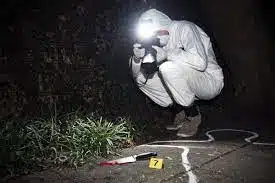 FIRST DEGREE MURDER
FIRST DEGREE MURDER
1st DEGREE MURDER UNDER WASHINGTON LAW
First-degree murder is a crime where someone causes the death of another person and either: (1) does so with a premeditated intent to cause that death; (2) does so while engaging in conduct that shows an extreme indifference to human life; or, (3) does so while committing the crime of robbery, rape, burglary, arson, or kidnapping.
Murder in the first degree is a class A felony under Washington law. The maximum penalty for the crime is life in prison and a $50,000 fine. The standard range sentence for the offense is 20 to 30 years in prison.
AGGRAVATED FIRST DEGREE MURDER
The laws on aggravated first-degree murder are set forth in RCW 10.95.020. A murder in the first-degree charge becomes “aggravated” if the murder is committed with certain factors involved. According to the statute, some of these factors include:
- The victim was a police officer performing his official duties at the time of the killing,
- The victim was a newspaper reporter covering the accused,
- The defendant acted pursuant to a “murder for hire” agreement,
- The defendant acted as part of a gang initiation,
- The killing occurred as part of a drive-by shooting,
- The victim was a judge, juror, witness, or attorney,
- The murder took place in the course of the commission of another serious felony, and
- At the time of the death, the victim had a restraining order against the defendant.
Aggravated first-degree murder is a class A felony. The crime brings a mandatory sentence of life in prison without the possibility of parole.
DEFENSES FOR MURDER CHARGES
A defendant can use certain legal defenses to challenge a murder charge. One is for the accused to show that a killing was excusable. This is known as excusable homicide.
A killing, or homicide, is excusable if:
- A defendant caused the death of a person by accident while doing a lawful act, and
- The defendant acted without a criminal, negligent, or unlawful intent.
In some situations, an accused can also use self-defense or defense of others as a valid legal defense. The accused may also assert misidentification of the defendant as a defense to the charges, and/or challenge DNA, fingerprint, and other forensic evidence.

 FIRST DEGREE MURDER
FIRST DEGREE MURDER